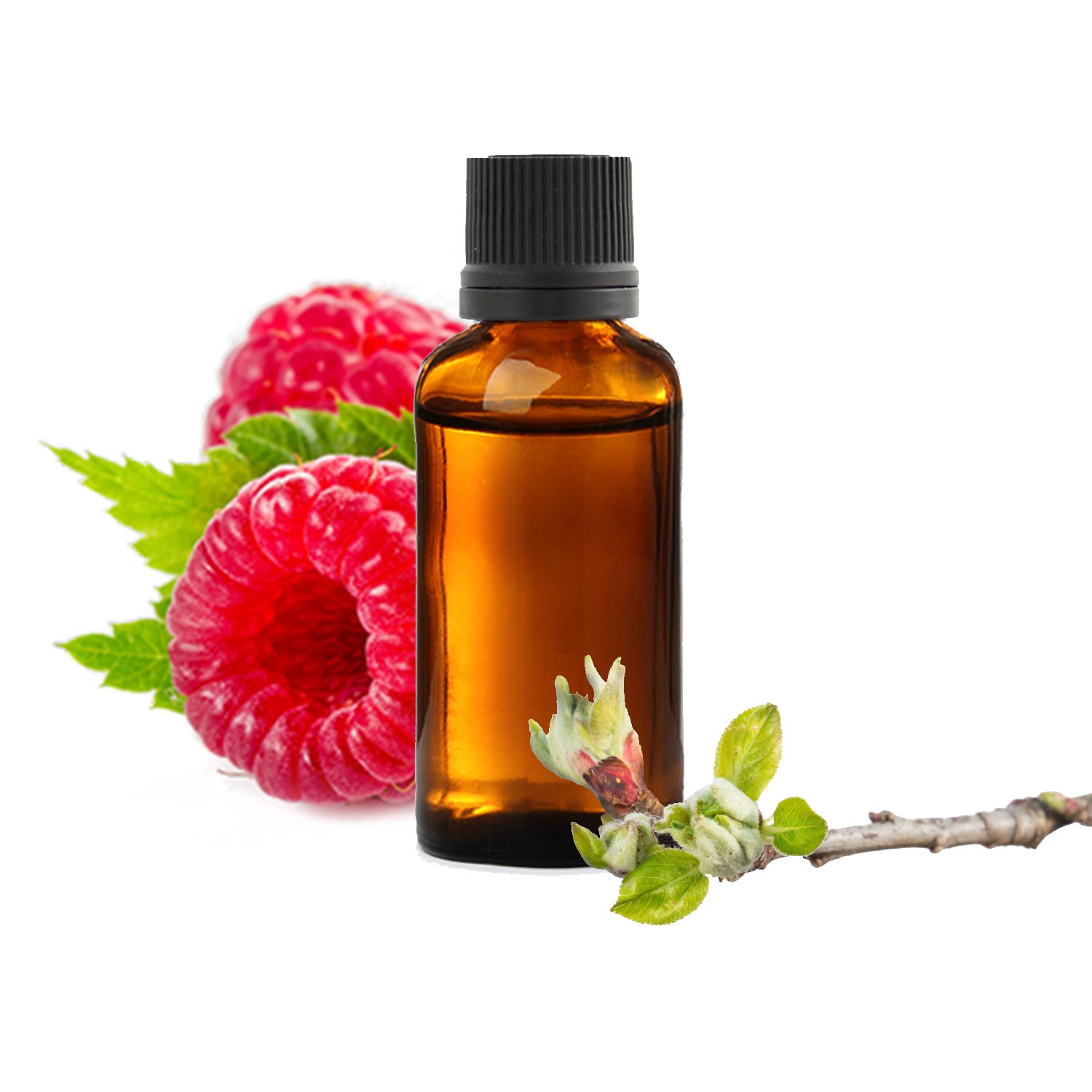
The Raspberry tree is a shrub 1 to 2 meters high from the Rosaceae family. In gemmotherapy, it is the young shoots of the Raspberry tree that are used, just before the appearance of the first leaf. A true female hormonal regulator, it stimulates the production of estrogen and progesterone if necessary. Raspberry bud macerate will be very suitable for situations of painful and irregular periods, menopause, enterocolitis. Latin name: Rubus idaeus L. Part used: Young shoots
This article was updated on 09/01/2024For what problems should it be used?
-
Urogenital system ++++ : Amenorrhea, Decreased libido, Hot flashes, Kidney stones, Dysmenorrhea, Endometriosis, Uterine fibroid, Ovarian cyst, Nephrolithiasis, Menopause, Menorrhagia, Metrorrhagia, Painful periods, Premenstrual syndrome, Vaginitis
-
Blood and lymphatic system ++ : Water retention
How to use it alone?
Adults and adolescents : Raspberry is a hormonal regulator for women. The hormonal cycle lasts 28 days on average in a woman. In order for the regulation to last over time, taking Raspberry is recommended over several cycles. Do not hesitate to seek advice from a health professional. Here is an example of possible use:
- 10 drops morning and evening during a complete cycle (1st day of period = 1st day of cycle)
- then 10 to 20 drops per day for 2 cycles, from day 14 to day 28
Synergistic uses
Painful periods
Raspberry can be combined with macerate of buds of Linden in case of painful periods. The latter helps to reinforce the antispasmodic action of Raspberry.
Menorrhagia
Raspberry being a hormonal regulator, it can be used during the first 15 days of the cycle. It is associated with the Apple tree, which stimulates the production of progesterone, and can be used the last 10-15 days.
Ovarian Cyst
The raspberry tree is associated with Vine to act on hormonal regulation, but also on the anarchic development of tissues. It also has an anti-inflammatory action which can be useful.
Endometriosis
Raspberry can be considered for its hormonal regulating effect. It can be associated with the Vine to act on the autoimmune origin, and to limit the anarchic development of tissues.
Main properties
-
regulator of the hormonal system :
raspberry bud macerate acts as a regulator of female hormones: estrogen and progesterone. Its young shoots act on the hypothalamic-pituitary ovarian axis in order to restore endocrine balance and the secretion of these hormones. As a regulator, it therefore corrects all female hormonal disorders, from puberty to menopause. It is suitable for pre and post-menopause in order to reduce the discomfort that may be associated with it. Through its hormonal action, Raspberry can in certain cases help to reduce excessive hair growth.
-
antispasmodic :
the action of Raspberry on the pituitary gland impacts both hormonal regulation but also uterine spasms. The bud macerate indeed has a muscle-relaxing action, it causes the relaxation of the uterine muscle, and thus reduces the frequency and force of uterine contractions.
Precautions for use
- Raspberry bud macerate is a herbal food supplement. It does not replace a varied diet and a healthy lifestyle. It is important to keep it out of the reach of children and not to exceed the recommended daily dose. Dosages must be adapted for young children.
- Raspberry bud macerate is authorized for the whole family, except for babies under 3 years old and pregnant women.
- This bud macerate is not recommended in cases of hormone-dependent pathology.
- Store away from light and heat.
What does a good raspberry bud macerate look like?
Botanical characteristics
- Latin name: Rubus idaeus L.
- Botanical family: Rosaceae
- Distilled part: young shoots
Composition
- Composition: Alcohol* 32%, Water, Vegetable Glycerin*, Raspberry bud extract (Rubus idaeus L.)*.
Organoleptic characteristics
- Appearance: liquid - possible cloudiness
- Color: orange-brown
- Odor: fruity, slightly alcoholic.
- Taste: fruity, sweet, alcoholic.
Was this article helpful to you?
Average grade: 4.7 ( 391 votes)
Bibliography
Work : Piterà di Clima, F., & Nicoletti, M. (2018). Summary of gemmotherapy - Scientific foundations of Meristemotherapy. Amyris Editions.
Work : Boistard, S. (2016). Gemmotherapy - Buds for health - Practical and family guide. Terran Publishing.
Work : Andrianne, P. (2011). Treatise on gemmotherapy: Therapy using buds. Amyris Editions.
Work : Halfon, R. (2011). Gemmotherapy - Health through buds. Dangles Editions.
Work : Ledoux, F., & Guéniot, G. (2014). Phytembryotherapy: The embryo of gemmotherapy. Amyris Editions.
Work : Pineau, L. (2019). The great book of gemmotherapy. Leduc.s Éditions.


